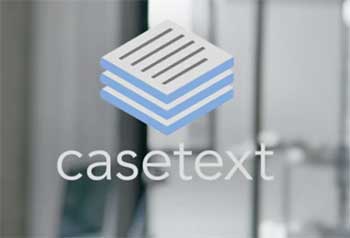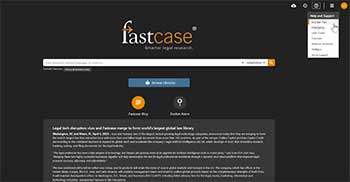Legal research platforms have come a long way in recent years. While stalwarts like Westlaw and LexisNexis still dominate the market, newer entrants like Casetext and Fastcase aim to provide attorneys with more affordable and user-friendly options.
This article provides an in-depth comparison of Casetext and Fastcase to help you determine which platform may better suit your legal research needs.
A Brief Comparison Table
| Features | Casetext | Fastcase |
| Content Size | 6 million+ documents | 1 billion+ documents |
| Focus | Recent cases and analyses | Comprehensive historical records |
| Search Technology | CARA A.I. for unintuitive connections | Machine learning for precision |
| Writing Features | Collaborative online editor | Outline builder and document drafting |
| Pricing | Free limited access, $65+/month subscriptions | $65+/month subscription from startup |
| Mobility | iOS and Android apps | Exportable libraries for reference |
Overview And Background
Casetext and Fastcase took different paths to disrupt the legal research space.
Casetext launched in 2013 as a free legal research website, gathering a community of lawyers to annotate and discuss case law. The site has grown robust editing and writing tools allowing users to analyze and share commentary on rulings. Casetext also provides AI-supported legal research, helping surface relevant case law from its database of over 6 million documents.

Fastcase came onto the scene earlier in 1999 as one of the first digital law libraries focused on legal research. Its goal was to consolidate federal and state court rulings and provide an affordable alternative to conventional platforms. Fastcase has expanded over the past 20 years, digitizing vast troves of case law and statutes while improving its intuitive search and visualization features.
While the two companies started differently, they now compete directly in leveraging technology to make legal research more accessible and collaborative.
Content And Coverage
The breadth of a legal research platform’s case law database is critical for thorough analysis. Both platforms boast extensive libraries, but notably, Fastcase has prioritized completeness while Casetext emphasizes recency.
Fastcase claims to have the most case law of any legal research service, with over 1 billion records including statutes, regulations, court rules, and dockets. It has focused efforts on digitizing older state and federal court rulings to build out comprehensive historical records spanning over 300 years.
Casetext states they have over 6 million legal documents in their database. While smaller than Fastcase, they focus on providing the timeliest case law and analyses possible. Casetext’s “WeCite” functionality utilizes AI to surface relevant rulings as they are published, ensuring users have access to the most up-to-date precedents.
For tracking appeals or understanding higher court reversals, Casetext may have an edge with its recency. But Fastcase likely wins for pure research volume and historical records.
Search Capabilities
The utility of a legal research platform comes down to how easily it can surface relevant rulings from mountains of documents. Both Casetext and Fastcase incorporate innovative features to enhance search.
Fastcase has invested heavily in improving search relevance and precision. Keyword queries leverage data science and machine learning to quickly return applicable cases. Fastcase also provides a visual Interactive Timeline view of rulings, helping researchers understand the chronological connections between precedents.

Casetext says its CARA A.I. is what sets its platform apart, as it acts as a legal research assistant. CARA evaluates the context of case law based on concepts instead of just keywords, often finding relevant yet unintuitive connections between documents. Casetext also provides a unique “Treatment” timeline showing how subsequent rulings have interpreted and discussed the cases you pull up.
For laser-focused Boolean searches, Fastcase may have an edge. But Casetext’s A.I. capacities could help surface unexpected yet pertinent case law connections.
Writing And Analysis Tools
Modern legal research involves more than just finding applicable precedents. Platforms now provide robust tools for analyzing rulings, organizing research, and crafting legal documents.
Fastcase enables easy annotating, highlighting, and linking between related documents in its digital library. It also offers a personalized online workspace and folders for compiling research notes. Recently added Outline Builder and Forecite features further support document drafting.
Casetext positions itself as the more collaborative platform, with social functionality at its core. Users can publish commentary on specific cases, connecting with other attorneys and building off each other’s analyses. The site’s Editor tool goes beyond other offerings, providing guided support for structuring memos, briefings, and pleadings.
For solo document drafting, Fastcase likely provides enough capabilities. But for benefiting from broader legal perspectives, Casetext’s community orientation gives it an advantage.
Accessibility And Pricing
Of course, comprehensive legal research capabilities are less beneficial if platforms have high barriers to entry. Casetext and Fastcase both aim to make practical packages accessible to solos and small firm attorneys. However, their pricing and structure does differ.
Most Fastcase plans start as low as $65 per month, with bulk discounts bringing the cost lower. Even solos can access comprehensive secondary sources and federal case law resources. Upcharges apply for some state laws and analytics tools.
Casetext offers their core case law libraries and editing functionalities for free. However, advanced legal research tools and state law access requires a paid subscription, which starts at $65 per month. Add-on packages with intuitive analytics dashboards and automated case tracking are also available.
For cost-conscious individuals or very small firms, Casetext’s free offering lowers the barrier. But Fastcase provides their robust core package at competitive rates, with volume discounts making it quite affordable.
Ease Of Use
Modern legal research tools should be intuitive, especially for solo attorneys without expansive IT support. Both platforms incorporate principles of user experience design for accessibility.
Fastcase prioritizes clear architecture and navigation in its interface. Tabs separate case law, statutes, court rules, and secondary sources. Keyword and citation searches autocomplete, lowering data entry. The app version provides mobility for legal research on the go.
Casetext is highly intuitive, with core functionalities available on a single page. Its homepage features an assistive chatbot, providing natural language search suggestions. Casetext also uses visual flags to highlight useful editor comments or critical treatment language from related cases. The site has clear prompts guiding document drafting and collaboration.
Also watch the video!
For those more comfortable with conventional digital law libraries, Fastcase will likely feel familiar. But Casetext’s conversational tone and visual assistive features help ease all user levels.
Integrations And Mobility
Legal research today often happens across multiple platforms, so integration capabilities are key. Mobility for researching and referencing on tablets or phones has also become essential.
For external integrations, Fastcase supports single sign-on with Clio and other practice management tools. This allows automatic syncing of client details and billing activity during research. Fastcase also enables exporting of case law libraries into common formats for second-screen reference.
The Casetext platform itself aims to provide an end-to-end workspace, with document management and calendaring possible beyond just research. For mobility, Casetext offers well-rated iOS and Android apps that sync with the core web experience.
If your firm relies heavily on Clio or other research systems, Fastcase may save you clicks. But Casetext allows complete legal project management directly within its platform.
FAQs
In terms of case law coverage and historical records, Fastcase provides immense depth competitive with Westlaw. However, Westlaw still leads for accessing cutting edge case analyses, secondary sources, and attorney-curated content. But for most small firm attorneys, Fastcase should satisfy the same core research needs at a fraction of the price.
For timely case law research and surfacing unexpected connections between precedents, Casetext delivers immense value rivaling Westlaw. However, Westlaw has far more attorney-curated content and secondary sources those doing intricate legal analyses may still rely upon. Casetext is closing this gap with community contributions and natural language processing. So for most individuals or small firm use cases, the platforms are quite comparable.
With prominent investors like August Capital and partnerships with bar associations nationwide, Casetext has a strong reputation. It counts patent lawyers, federal judges, and top litigators among its earliest users, validating Casetext’s offerings. While younger than leaders like Westlaw or LexisNexis, Casetext’s recency, A.I. capabilities, and collaborative functionality keep it quite reputable.
Casetext actually draws case law from the LexisNexis library, so its coverage foundation is quite reputable. Casetext then enhances this with A.I. tools for surfacing unexpected connections and community features facilitating deeper analysis. For cost-conscious users not reliant on secondary sources, Casetext delivers immense value over Lexis. However, large law firms deeply entrenched in Lexis may be slower to adopt newer tools like Casetext.
Also Read: Choose Between Shop And Store Domain.
The Verdict
In reviewing the modern legal research platforms Casetext and Fastcase, both tools have evolved robust technologies and content libraries that can rival traditional players at a fraction of the cost. Fastcase shines for its immense database spanning over 300 years of comprehensively digitized case law records. Meanwhile, Casetext leverages AI and community collaboration to enhance search and connect attorneys for timely analyses.
Ultimately, for solos and small firms, choosing between the two platforms comes down to personal priorities. Attorneys focused strictly on historical precedent and traditional legal research may find Fastcase better suits their needs. However, those looking to tap into broader perspectives, uncover unexpected connections in case law, and track appeals in real-time may find Casetext an easier fit.
With both options offering intuitive experiences and mobility at affordable rates, small firm attorneys now have excellent alternatives to conventional legal research tools. The decision between Casetext and Fastcase may simply depend on which innovative features align best with one’s practice.